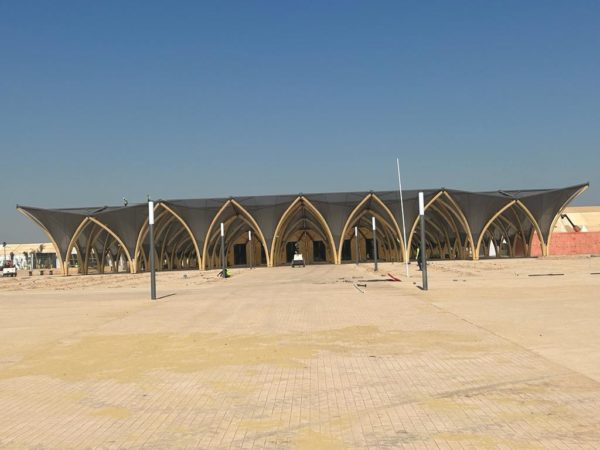By Adama Wade, Marrakech
Far from the devastation that followed the deadly earthquake on Saturday, September 9, the wooden, aluminum, and renewable material structures set to house the annual assemblies of the World Bank and IMF have absorbed the shock well. “No significant damage,” said one of the officials responsible for this massive construction site, covering 50 hectares and expected to host 140,000 delegates from 190 countries worldwide. The event is scheduled from October 9 to 15, 2023, at the Bab Ighli site.
Over a thousand workers labor daily at this site, adjacent to the old city, the Medina, which has already accommodated twice as many people, or 30,000, during the 2016 Cop event. The challenge remains the same: to complete the construction on time. On this front, the schedule will be met. The work will be finished within the next two weeks at most. Teams from the IMF and World Bank, including Férid Belhaj, Vice President of the World Bank for the Middle East and North Africa region, who visited the site and the largely intact housing structures, left satisfied.
In short, Marrakech and Africa will indeed be present for this significant event, the first on the African continent in 50 years, and the first in the Arab world in 20 years, as Abdelatif Jouahri, the Governor of Bank Al Maghrib (the Central Bank of Morocco), noted in a video conference regarding the expectations of Southern countries for this global gathering (a summary will be available in our Monday edition). There will be no shortage of topics for discussion for the Moroccan Central Bank, which is working in concert with the Association of African Central Banks (AACB) and the African caucus recently gathered in Cape Verde. Topics will include reforms of multilateral systems discussed last June at the Paris summit on the new global financial architecture, the roles of multilateral institutions and development banks, debt issues, financial inclusion, energy transition, and Africa’s representation in global institutions. These topics will be reviewed in the 3,800-seat plenary hall, at 48 side-event sites, or in committees in the 650 offices allocated to delegations. The press will have a 650-seat space.
On the eve of the earthquake, the steering committee chaired by Moroccan Prime Minister Aziz Akhannouch announced that major work was completed. This statement still holds true after the earthquake, which measured 7 on the Richter scale. Phase 2 for finishing and decoration is scheduled to be completed by September 24. Registration continues.



